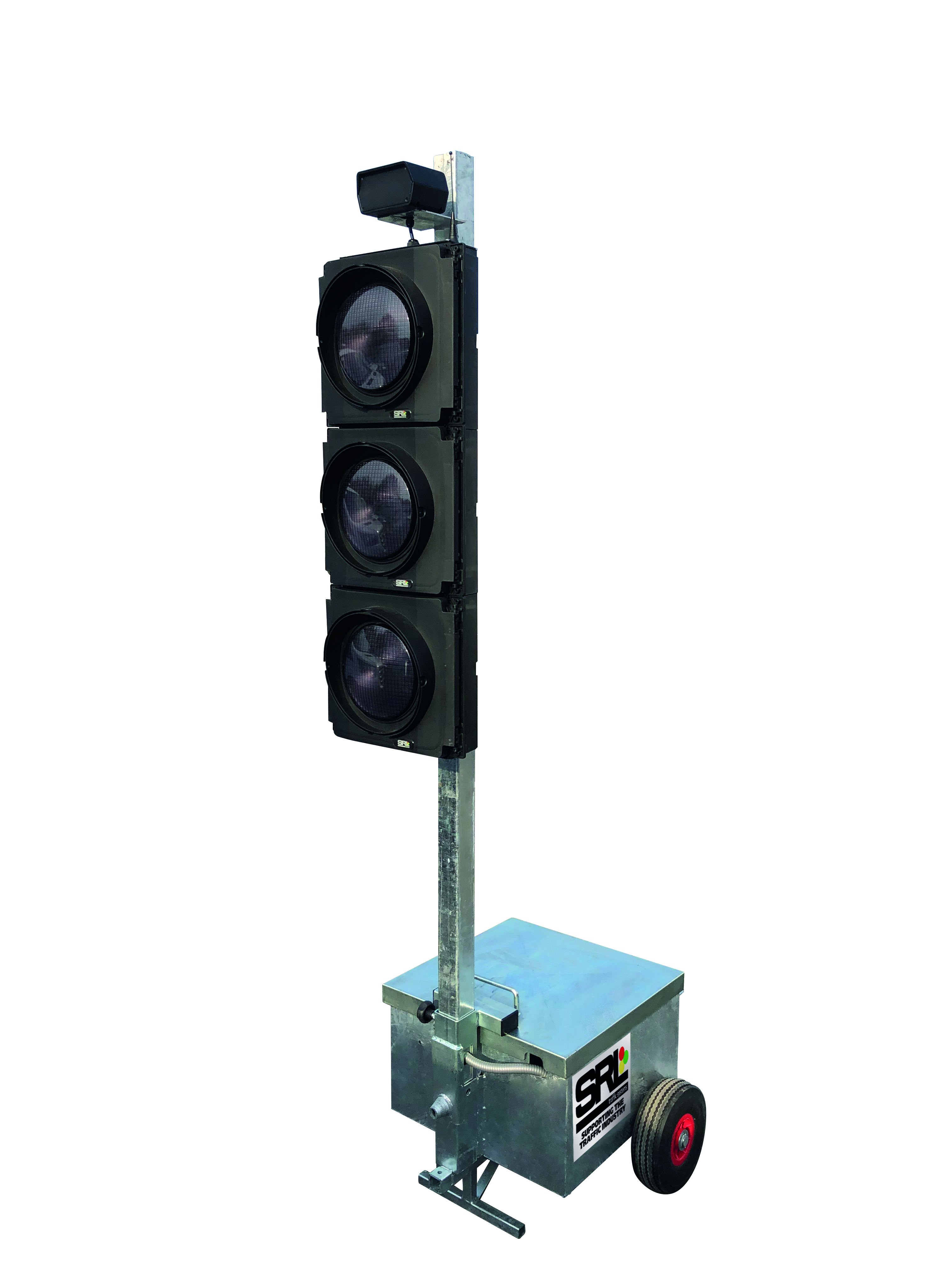
Jürgen Mück, Siemens AG, describes the three-level approach taken in Germany to adaptive network control
As adaptive traffic light control systems are able to react quickly to actual traffic conditions they are considerably more effective than conventional solutions. They also have a significant environmental influence: in flowing as compared to stop-and-go traffic, fuel consumption drops by up to 20 per cent and emissions of NOx and CO2 are reduced by up to 50 and 33 per cent respectively.The development and spread of adaptive control systems in Germany started late, compared to the UK (SCOOT) and Italy (SPOT/UTOPIA) as the existing standards in local control technology, in combination with sophisticated guidelines, created resistance to the extended use of commercial adaptive control methods at the network level.
Nevertheless, the three-level adaptive network control concept now used accommodates all types of road users and precisely demarcates the different tasks of the functional levels. The network control system obtains strategic information from the traffic management level; the tactical level - the adaptive part of the system - optimises the cycle time and average green-time distribution on the basis of these general conditions and then calculates the sequences of green phases and coordinates the network as a whole; the operational level concentrates on second-by-second control of the traffic and on monitoring the controllers with their signal transmitters and detectors.
Sitraffic MOTION
The most widely used German adaptive network control system is Sitraffic MOTION (Method for the Optimisation of Traffic signals In Online controlled Networks), which in operation sends adapted signal plans to controllers every ten to 20 minutes.The main difference between Sitraffic MOTION and systems such as SPOT/UTOPIA and SCOOT is that second-by-second control of the signal groups is separated from the adaptive control level; the network control method uses data that is transmitted every one to two minutes.
Adapting the controllers only every 10 to 20 minutes allows some important changes in the structure and algorithms of the network control methods: there is no need for the per-second assessment of traffic conditions; missing detector measurements can be replaced with averaged values; and there is enough CPU time to run extended algorithms to optimise coordination throughout an entire network.
The effects of Sitraffic MOTION can be seen in the upgraded control system for the Valby district of Copenhagen where the public urban transport system, which included four bus lines, was to be made 20 per cent faster without slowing the flow of private vehicles. Analysis of the implementation showed that all travel times had shortened. Bus travel times decreased by up to 27 per cent and the speed of private vehicles rose by up to 6 per cent.
Data issues
Missing or incorrect detector data is a fact of life. In the case of control models which use per-second data, missing or incorrect values can lead to problems and rectification needs to be swift. The use of a distributed network control architecture which primarily makes use of aggregated values enables the application of sophisticated replacement methods which guarantee rugged and reliable operation even when significant numbers of detectors fail.For Sitraffic MOTION, a new patent-pending algorithm has been developed which takes into account the recent measurements of adjacent detectors.
For each detector, measurements are collected in histograms showing the frequency of each measurement value relative to those of all other values it has measured.
In the event of a failure, the histograms of the failed detector and those adjacent are accumulated to form sum curves standardised by 100 per cent (Figure 1). The recent traffic flow values measured by the adjacent detectors are reflected by their individual sum curves, producing specific percentage values (right-hand side of Figure 1). The percentages lead to an average value, which is finally applied to the sum curve of the failing detector. In Figure 1, the diagram at the bottom on the left-hand side shows the real flow values (blue) and estimated values (green), assuming the measurements are missing.
Evaluations in a network with 200 detectors have shown that the estimation error is less than 2.5 veh/90s (or 100 veh/h) in more than 90 per cent of all values.
Estimating queuing traffic
The use of local control devices leads to a specific problem. Traditionally, German controllers are fitted with detectors that are installed a short distance (10-50m) ahead of stop lines; this does not allow for balancing by measuring input and output flows. They use various vehicle-actuation methods, which allow the green time to be varied between pre-set limits in small extension steps.This elementary problem was solved by the author in 2001 with a new cycle-based queue-length estimation method which allows back-up lengths up to distances five or 10 times greater than the distance between detector and stop line to be estimated. Furthermore, delays and travel times on subsequent days are computed.
Figure 2 shows a typical result of queue-length estimation. The core of the self-calibrating estimation method uses 'fill-up time' (the period from the beginning of a traffic signal's red time to the detection of continuous vehicle presence by the detector). From this, it can be derived whether vehicles are approaching the traffic signal quickly or slowly at the end of the green time.
Optimising green and cycle times
Both SCOOT and SPOT/UTOPIA use optimisation methods that only look at local areas around a controller. For SCOOT this is done in the control centre whereas SPOT/UTOPIA is based on decentralised optimisation.In both cases, the optimised coordination structures are somewhat arbitrary. This can be experienced by car drivers that drive along the same route every day and have to stop at varying signals. It can be assumed that car drivers will not adapt so that they accelerate and decelerate efficiently as they cannot foresee what a traffic signal's state will be when they will arrive at an intersection.
The three-level approach of network control, where a minute or even longer is available for calculations on the network level, allows the use of optimisation algorithms able to take a more holistic view. This is especially important when traffic flows needs to be coordinated. It is therefore possible to implement algorithms that attempt to determine an optimum form of coordination for the road network, while taking into account and tracking platoons that pass a sequence of controllers.
German drivers are used to unchanging coordination structures on the routes they drive along every morning or evening. They expect to pass the same intersections without stopping every time they arrive at them. This requires the imposition of similar coordination patterns on similar traffic situations and Siemens has developed and implemented an optimisation algorithm which is deterministic and generates reproducible results. Previous experiments with genetic algorithms which use stochastic variations as a basic principle and therefore act as a 'black box' were unsuccessful.
The development of the new coordination algorithm was finished in 2008. The new algorithm was first installed in the German City of Münster (North-Rhine Westphalia) and controls a series of 24 controllers in a line. A study published by the Ruhr University of Bochum in Germany shows that traffic flows along a 6km (3.7-mile) stretch of road in Münster improved by 38 per cent following the introduction of an adaptive traffic control system.
SCOOT Developments - 2009 and beyond
by Gavin Jackman, Head of Traffic and Software, TRL
The SCOOT (Split Cycle Offset Optimisation Technique) adaptive traffic signal management tool was developed over 30 years ago and is jointly owned by
SCOOT has proven to be a world-leading Urban Traffic Control (UTC) tool. It typically reduces traffic delay and congestion by an average of 20 per cent. The developmental investment level aligns itself with the current high levels of interest in adaptive signal control. These come as no surprise as congestion remains the priority for transport planners, policymakers and authorities worldwide. Technologically, two major trends are making deployment more attractive than ever: detector technology has advanced and many vendors are now offering easy-to-deploy wireless solutions which have the potential to reduce set-up and maintenance costs. Support already developed in SCOOT (MC3 release) for IP-packet based communication standards provides for the move to deployment over digital communications.
Policy drivers in today's urban environments include the focus on modal shift to public transport and the promotion to and adoption by the public of even greener modes such as walking and cycling.
Bus prioritisation and its benefits in the urban environment are certainly well documented but as more schemes emerge the focus at TRL is on developing flexibility and control over set-up, adjustment and fine-tuning so that it becomes evermore effective and controllable. Developments in SCOOT's bus priority logic have been directed at enhancements to allow stages to be skipped at traffic signals in order to provide higher levels of priority in some situations. Trials have been carried out in London to assess the benefits of the logic and the safety implications. Guidelines and recommendations on when and how to implement stage skipping have also been developed.
SCOOT is already well placed with its existing controls to cater for the needs of tram prioritisation and development will take place in line with customers' requirements to ensure that any tram resurgence is well catered for.
For many years SCOOT has been used to prioritise congestion relief. We are now seeing a desire to provide a balance between modes. Buses, as an example, have higher priority than congested car links but we are also now witnessing the need to allow pedestrians to have the same status or even priority over cars. TRL is spending considerable time researching, understanding and developing the flexibility in SCOOT to cater for these needs and policy drivers. This forms the largest part of our current R&D effort.
SCOOT has also recently been updated with the latest pollutant (emissions) data and development work to allow optimisation based on emissions is ongoing.
Another area that TRL is spending particular time on is the connection of SCOOT to micro- and macrosimulation modelling products. Many urban scenarios, such as what happens around a major sporting event or venue, can be planned or predicted. Historical traffic data will inform the experienced traffic engineer of the likely impact on the neighbouring network and its use in a simulation model allows further evaluation of a proposed set of management scenarios and their outcomes. The combination of adaptive and premeditated scenario control plans could well be a more effective solution than an adaptive 'fix' as traffic builds.












